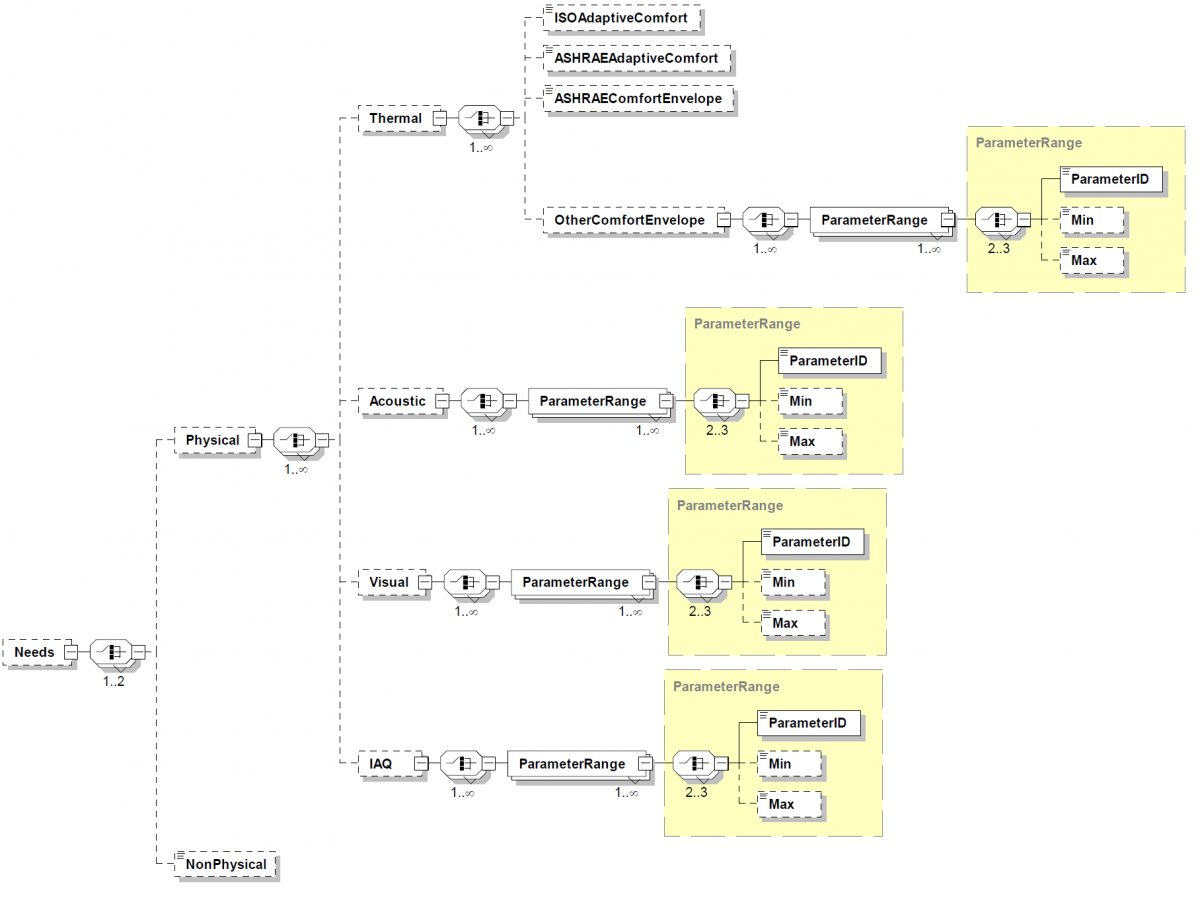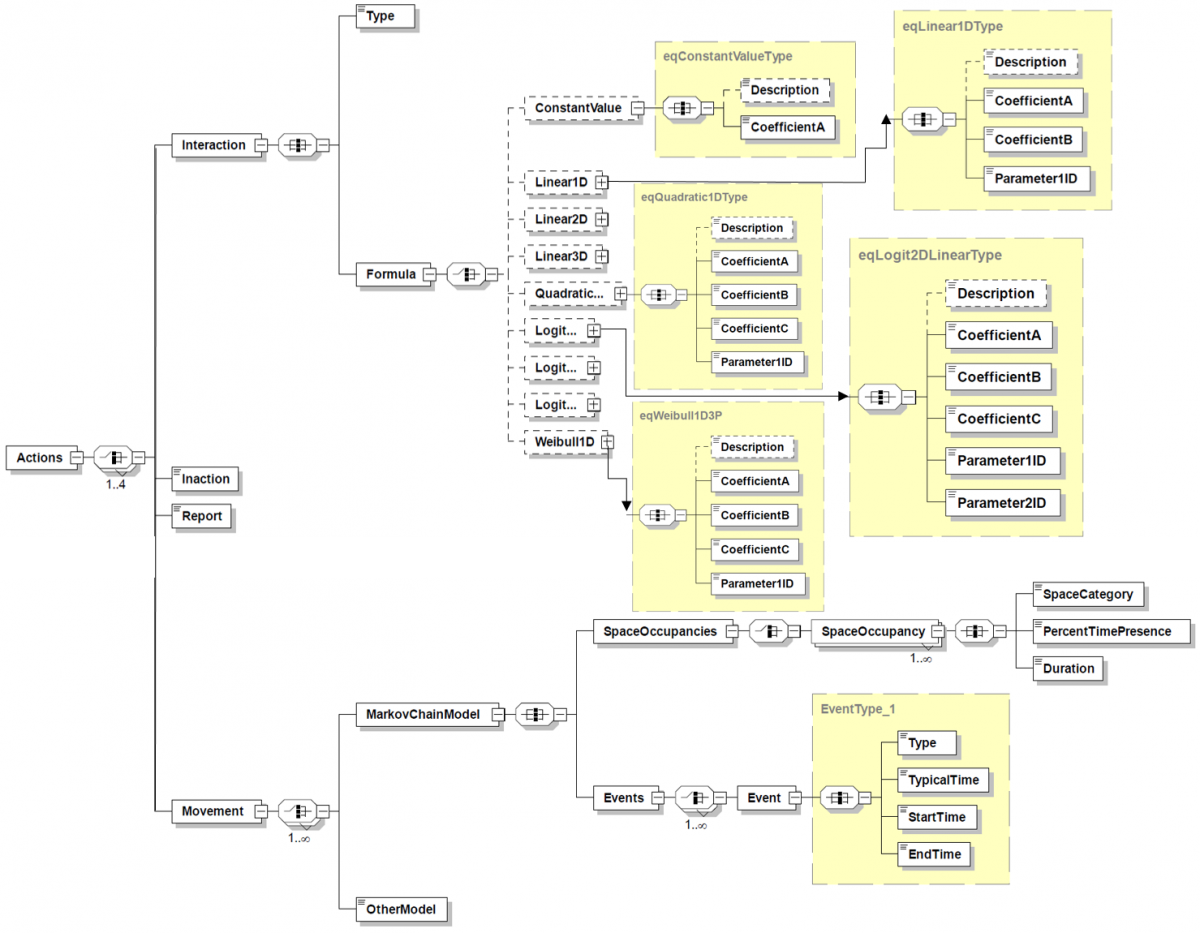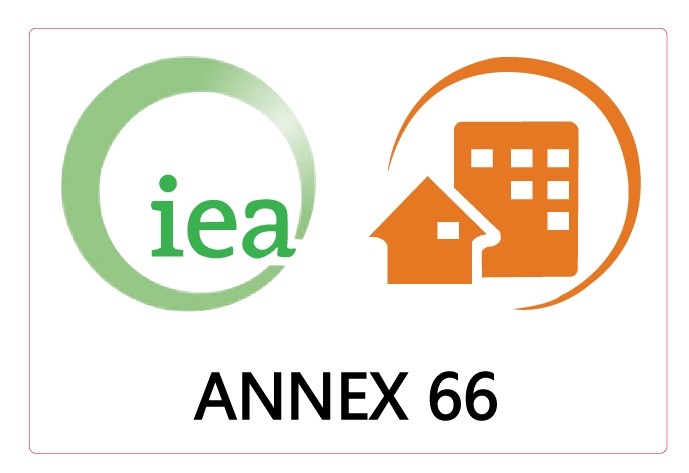XML Schema – obXML
The topology of the DNAs framework was implemented into an XML schema titled 'occupant behavior XML' or obXML schema. The topology of the DNAS framework implemented in the obXML schema has a main root element OccupantBehavior, linking three main elements representing Buildings, Occupants and Behaviors, and two optional elements Seasons and Time of Day.

The Buildings element pertains specifically to the inputs related to occupant behaviors in the building. It has a unique ID attribute, and required Type and Spaces children elements. The Type element contains 39 enumeration building types, consistent with those commonly used in BIM schemas (such as gbXML). The Building element has optional children elements of Address and Description to be input as a string. The Spaces element allows for the choice of one to infinity spaces to be defined. Each Space element includes a unique attribute ID, and the required child elements of Type (MeetingRoom, Corridor, Outdoor, Office, ResidentialOwn, ResidentailRent, OfficeShared, OfficePrivate, Other) and GroupPriority (Majority). In addition, a description, maximum or minimum number of occupants within the space and meeting information is optional input. If the space is communal, the Meeting element contains child elements describing the Duration, StartTime, EndTime, and the Probability of the meeting occurring. The Building parent element hosts the Systems child element, describing the physical equipment or components with which an occupant may interact. The child elements of the Systems element include the Window, Shade, Light, Thermostat, Equipment, and HVAC control, each with a unique ID attribute, an optional Description element, and an enumeration selection for the Type of control: window - operable or fixed; shade - operable or fixed; light - on/off, dimmable, two step, three step; thermostat - adjustable, none, fixed; HVAC system - central, zonal controllable, zonal fixed.
The Occupants root element describes the occupants within the building. Each parent Occupant element has a unique attribute ID and optional child elements of Name, Age, Gender, Lifestyle, Jobtype. A behavior ID referencing the Behaviors root element tags an occupant to a specific behavioral action.

The Drivers element has six child elements, namely (1) Time, (2) Environment, (3) EventType, (4) Habit, (5) Spatial and (6) OtherConstraint. The Time child elements include the Time of Day (morning, noon, evening etc…), Day of Week Type (Monday, Tuesday, Wednesday etc…), and Season Type ( spring, summer, fall etc…). The Environment child element Parameter includes the four sub-elements Name, Description, Type, Unit and an attribute ID. The Type element includes 30 different enumerations within the general categories of temperature, IAQ, daylight factor, illuminance, glare, relative humidity, solar irradiance, raining and noise. These enumerations are separated according to indoor or outdoor applications. Each Type has a unique attribute ID and associated unit. The EventType child element detail the circumstances that may be driving occupant actions such as waking up, sleeping, leaving for work or returning from lunch. The Habits child element lists personal enumerations traits such as smoking. The Spatial child element has the sub-child element SpaceType (residential, office; owned, rented) and a space reference ID referencing the Space child element defined under the parent Building element. Lastly, OtherConstraints include the option of signifying that there are no occupants in the room.

The Needs are categorized into Physical and Non-physical child elements. The Physical needs are comprised of the 4 child elements of Thermal, Acoustic, Visual and IAQ. Each child element in the Physical category references a unique ParameterRange signifying an acceptable input comfort range with a unique ID, minimum and maximum attributes. The Thermal child element allows for 4 different comfort element options following the ISO adaptive comfort standard, the ASHRAE adaptive comfort standard and comfort envelope, or a user-defined comfort envelope. The Non-physical element is less quantitative, consisting of descriptive enumerations such as privacy, view, preference, safety and other.

The Actions element has the 4 child elements of Interaction, Inaction, Report, and Movement. Child elements to Interaction include different mathematical methods (i.e. constant value, linear 1D, 2D, 3D, quadratic 1D, logit1D, 2D, 3D and Weibull 1D) to model the probability of the action to occur. The independent variables in the mathematical expressions reference the child element Parameters defined by Drivers. The equation coefficients are decimal inputs. Figure 7 displays the topology of the Actions element taken from the xsd file showing the child elements which capture the mathematical format (parameters, coefficients) used to capture the probability of occupant actions in the obXML schema. This method of providing a standard equation to characterize an occupant’s action allows for a less deterministic representation of behavior, potentially leading to more insight into the impact of occupant behavior on building energy consumption.

The Systems element contains the details of building equipment or components that an occupant may interact with to satisfy their needs. The 6 child elements under the Systems parent element include Windows, Shades, Lights, Thermostats, Equipment (electrical appliances, office equipment), and HVAC. Each has a control Type that describes the type of allowable actions e.g. a window is operable or fixed; a light can be switched on/off, dimmable, two steps, or three steps; a shade is adjustable or fixed; a thermostat is adjustable or fixed; HVAC is controllable, zonal controllable or zonal fixed. The unique attribute ID refers to the child element of the detailed system (window) defined by the Building parent element.

Lastly, the Seasons and Time of Day elements are optional providing the user the ability to input additional information about seasonal specifics (start month, end month, start day, end day) and details about the time of day (start hour, start minute, end hour, end minute).
More Information about the obXML schema can be found at:
Hong T., D'Oca S., Taylor-Lange S.C., Turner W.J.N., Chen Y., Corgnati S.P. An ontology to represent energy-related occupant behavior: Part II: Implementation of the DNAs Framework using an XML schema. Building and Environment, 2015. (link).


